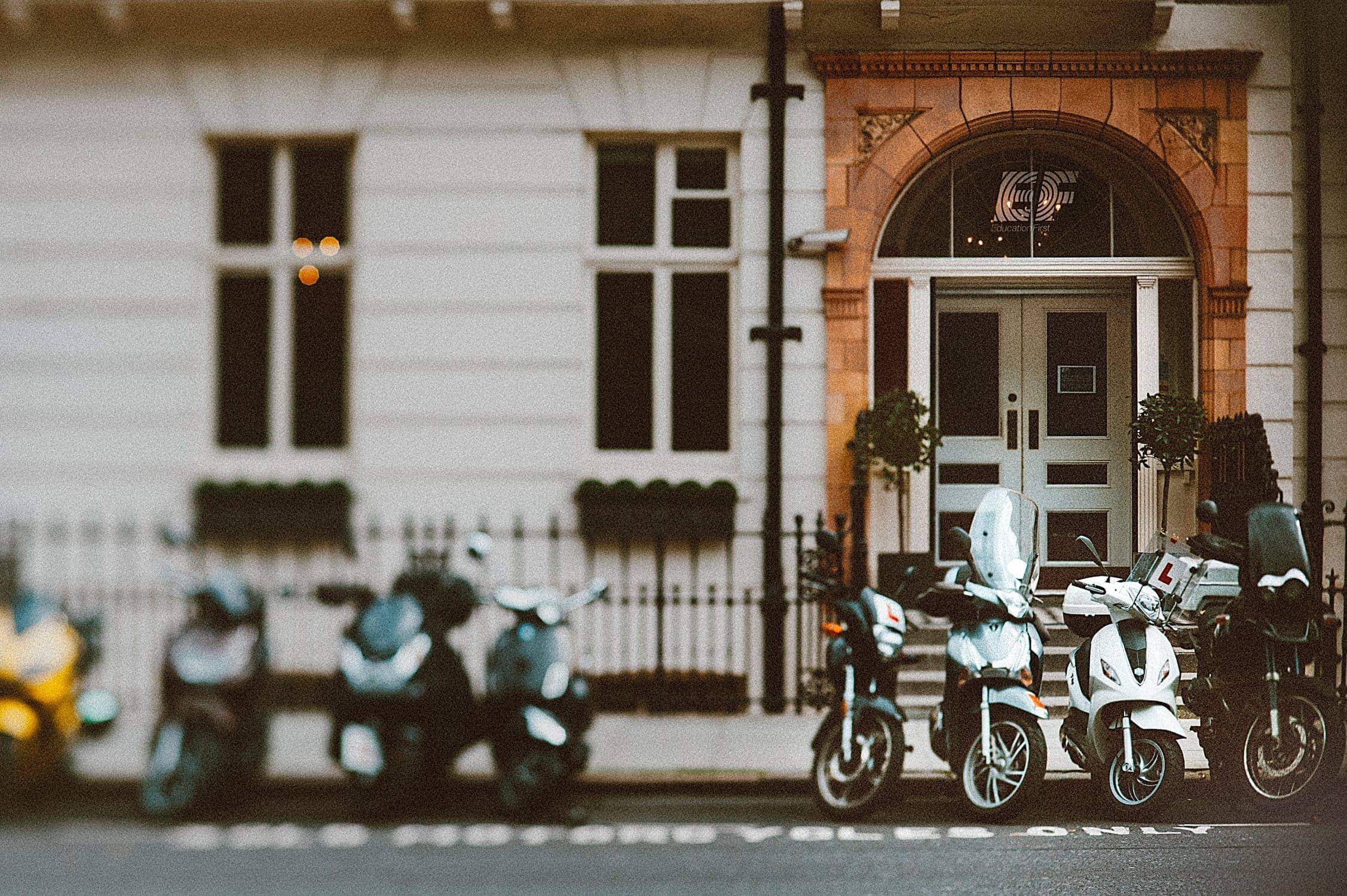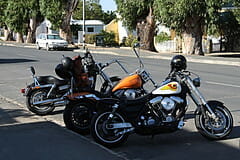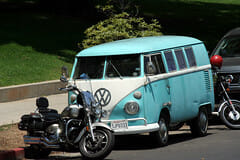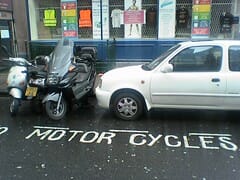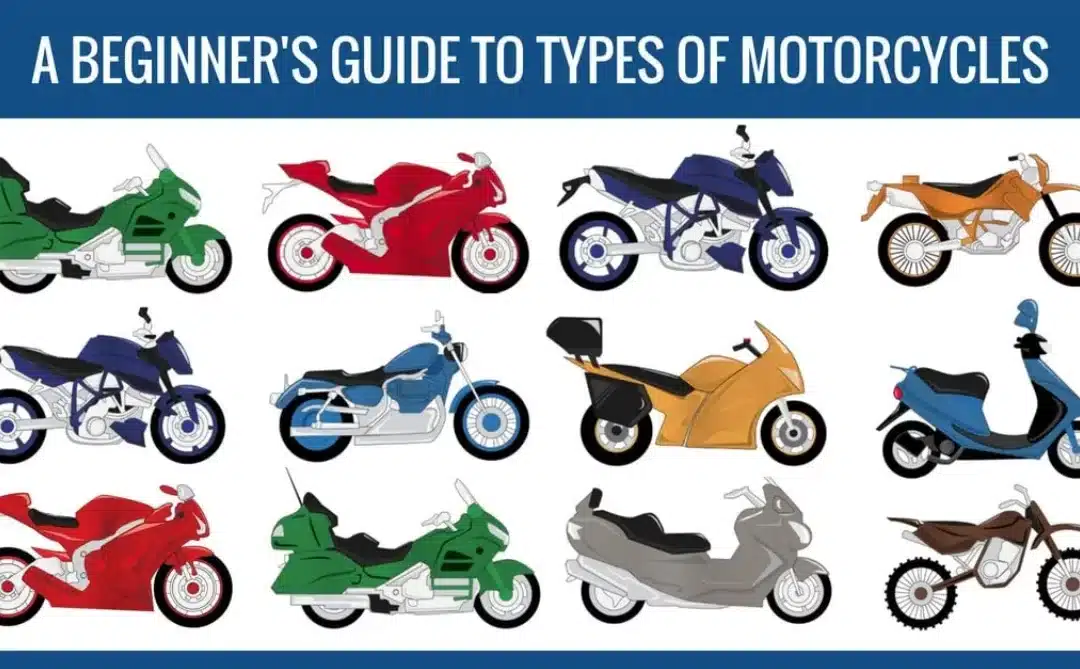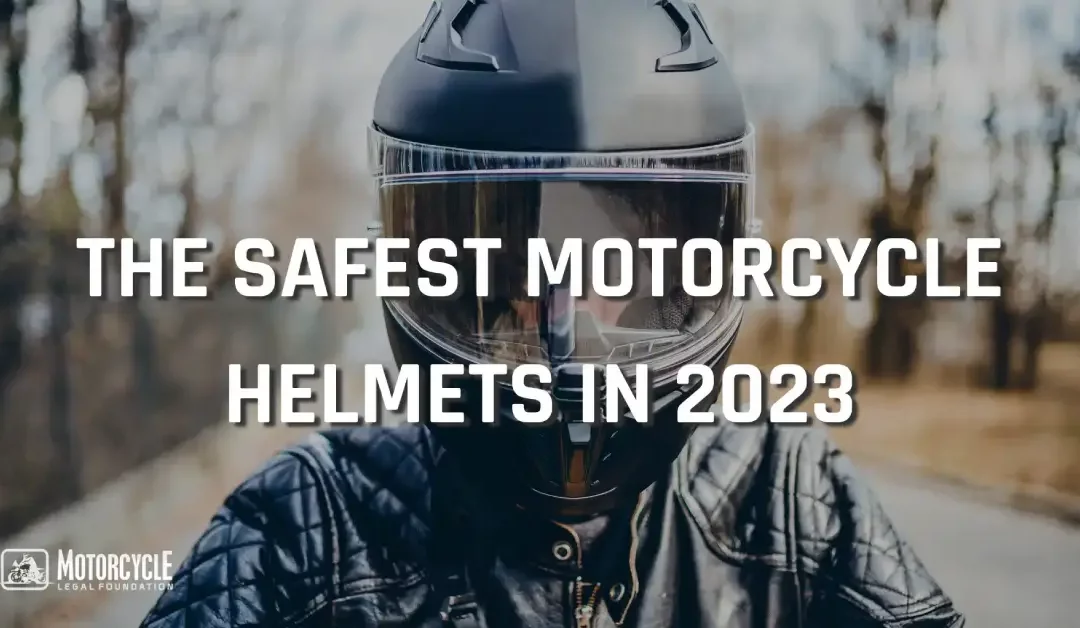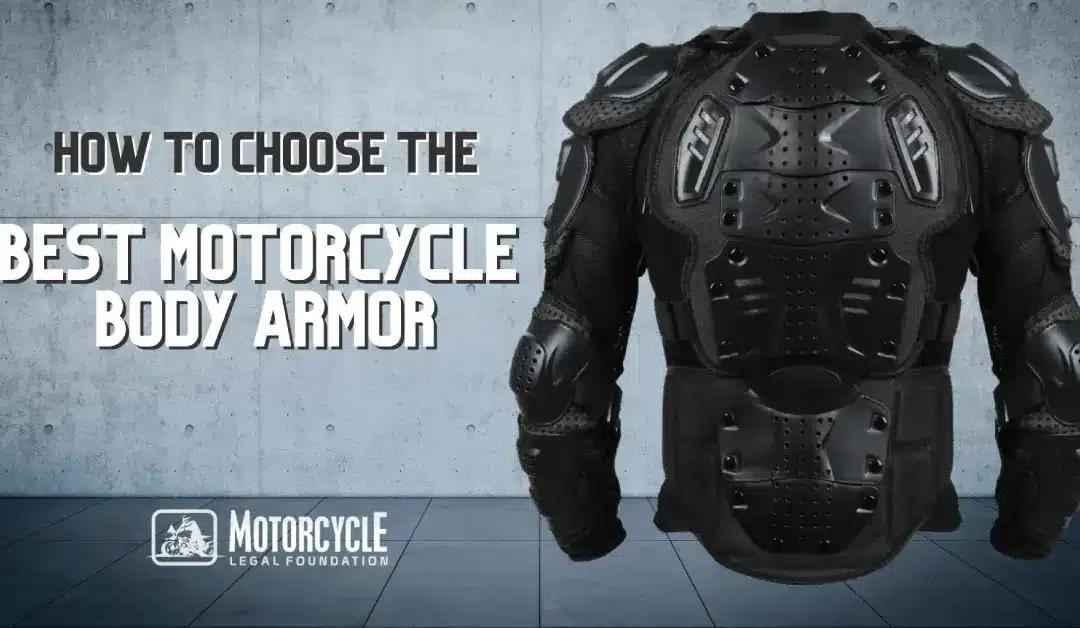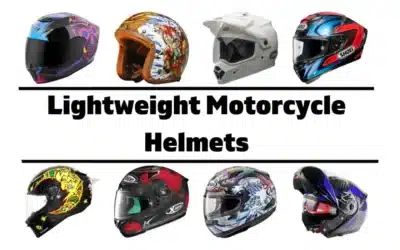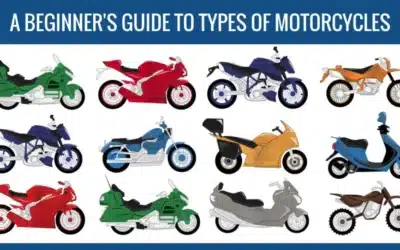One of the benefits of riding a motorcycle is parking. They are smaller, lighter, and more maneuverable, but that doesn’t make them free to park anywhere. States and cities have regulations and laws about parking motorcycles, and whether that is similar to a car or truck may vary by location. We’ll discuss any similarities and a unique set of rules for parking your motorcycle.
Street Parking
If you’re used to driving and parking a car on the street, you’re more than halfway there to understanding the laws for parking a motorcycle on the same stretch of road. Cars and motorcycles usually follow the same guidelines, but motorcycles bring about few exceptions. Follow these street parking guidelines when you’re parking:

- On a one-way street – Parking on a one-way street is similar to a two lane street as you’ll want to park with a tire touching the curb. It’s advisable to make the touching tire the rear tire for the ease of departure and pointing in the direction of traffic. One difference is that you may be able to park on either side of the roadway, which makes your chances of finding a suitable spot double.
- California Vehicle Code section 22503 – California has a defined rule for parking your motorcycle, which includes the two notes above for one-way or dual direction streets. One additional note is that a divided highway follows suit with the tire touching a curb, if possible, but would only apply to the right side of the road. In general you probably don’t have space to safely park on the left side of the road with the divider. Most states have similar wording concerning parking on streets, but be sure to check what the exact guidelines are where you live or plan to travel to.
Some of the other tips to offer include not parking where other vehicles may not see you, leaving space for other vehicles to move, parking in gear, avoiding double parking, and using a lock. Let’s look each in a little more detail:

- If you are parking in front of another vehicle, leave enough space for them to leave without hitting your motorcycle. They should know that they hit your motorcycle, but they again could leave you with a fallen motorcycle and a hefty repair bill. Park toward the middle of the parking spot if you need to use a full sized vehicle space rather than at the rear and close to the vehicle behind you.
- As the parking regulations mentioned denote, park with your motorcycle tire touching the curb. While that should keep your motorcycle from rolling, you should also leave your motorcycle in gear while parked. That will limit the forward roll of the motorcycle and possibly prevent the motorcycle from rolling off the center or side stand.

- Use a lock – Motorcycles are susceptible to theft since you can pull in the clutch lever and roll the motorcycle away to an awaiting van or trailer. There are motorcycle specific locks available, which should deter theft.
Are You Able To Park On The Sidewalk?
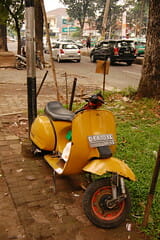
Can You Share a Metered Parking Spot?
This may be answered with a yes or a no depending on where you are. Some cities don’t allow for sharing metered parking. That includes two or more motorcycles together. Some do allow it, and also enforce the tickets in case that the meter runs out before you leave. Check your local guidelines before attempting to share a metered space with another vehicle or motorcycle.
Can I Park My Motorcycle Between Cars?
This again, may fall in the area of maybe. Some areas may allow motorcycles to park between cars. If you plan to squeeze your motorcycle between cars, try to keep as much space as possible to other vehicles. Give them enough space that they can leave the parking space without running into your motorcycle.
Parking Garage Etiquette
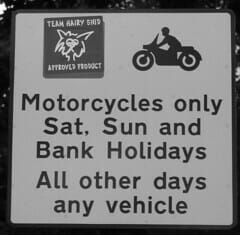 When it comes to parking garages, there are two general types: public and private. Public parking garages may be at municipal sites and shopping malls that anyone can have access to. They may have metered entry or exit, but if anyone can get in you should consider them a public domain. A private garage may be owned or managed by a business and is not open to the general public for parking. In either type, you may find that they have specific parking spots for motorcycles (including scooters). They are usually at the end of parking aisles and somewhat protected from other vehicles. Check if they have specific motorcycle spots available, and if they don’t they may or may not allow you to park your motorcycle in a regular vehicle parking spot.
When it comes to parking garages, there are two general types: public and private. Public parking garages may be at municipal sites and shopping malls that anyone can have access to. They may have metered entry or exit, but if anyone can get in you should consider them a public domain. A private garage may be owned or managed by a business and is not open to the general public for parking. In either type, you may find that they have specific parking spots for motorcycles (including scooters). They are usually at the end of parking aisles and somewhat protected from other vehicles. Check if they have specific motorcycle spots available, and if they don’t they may or may not allow you to park your motorcycle in a regular vehicle parking spot.
Parking in Groups
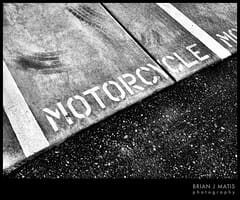
With all of these rules that may or may not apply to your situation, it’s best to check your local laws before you ride and park. Choosing motorcycle designated parking spots offer more safety and less hassle, but they may not always be open or available in all locations. If you choose to park between vehicles or share spaces, stay safe doing so. In all cases, stay safe while parking and riding.

